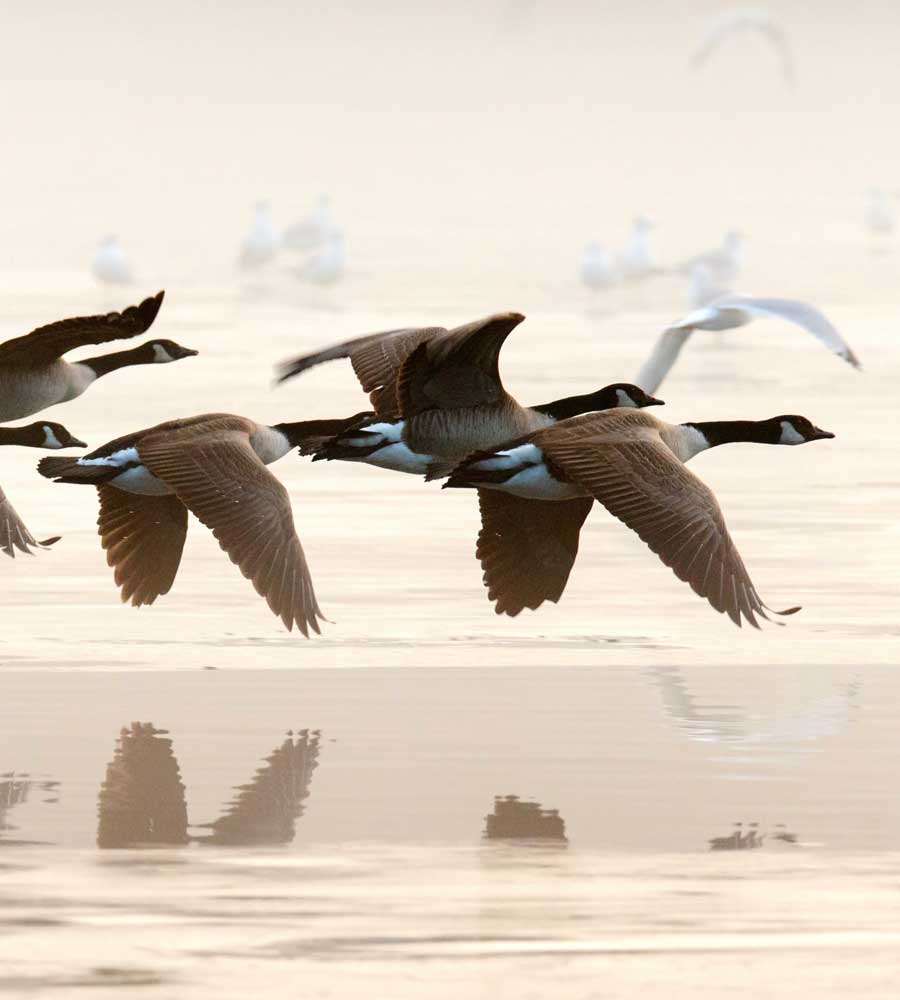About Geese
Quick Goose Life Facts
- Life span of up to 24 years
- Mating is for life. If a mate is lost, a new mate is often found
- The average nest size is three to six eggs, with as many as 12 possible
- Malting of adult birds occurs every summer for up to six weeks, rendering all birds flightless
- Nests can be large at up to four feet across and are usually built on land that is near water
- Geese are grazing animals that eat grasses and succulent plant material
- An adult goose eats up to four pounds of grass daily
- An adult goose drops an average of two pounds of fecal matter daily
- Goose fecal matter has been linked to the spread of diseases and bacterial infections
- Population growth ranges from 10 to 17% annually
- Geese typically return to the same nesting and birth sites every year
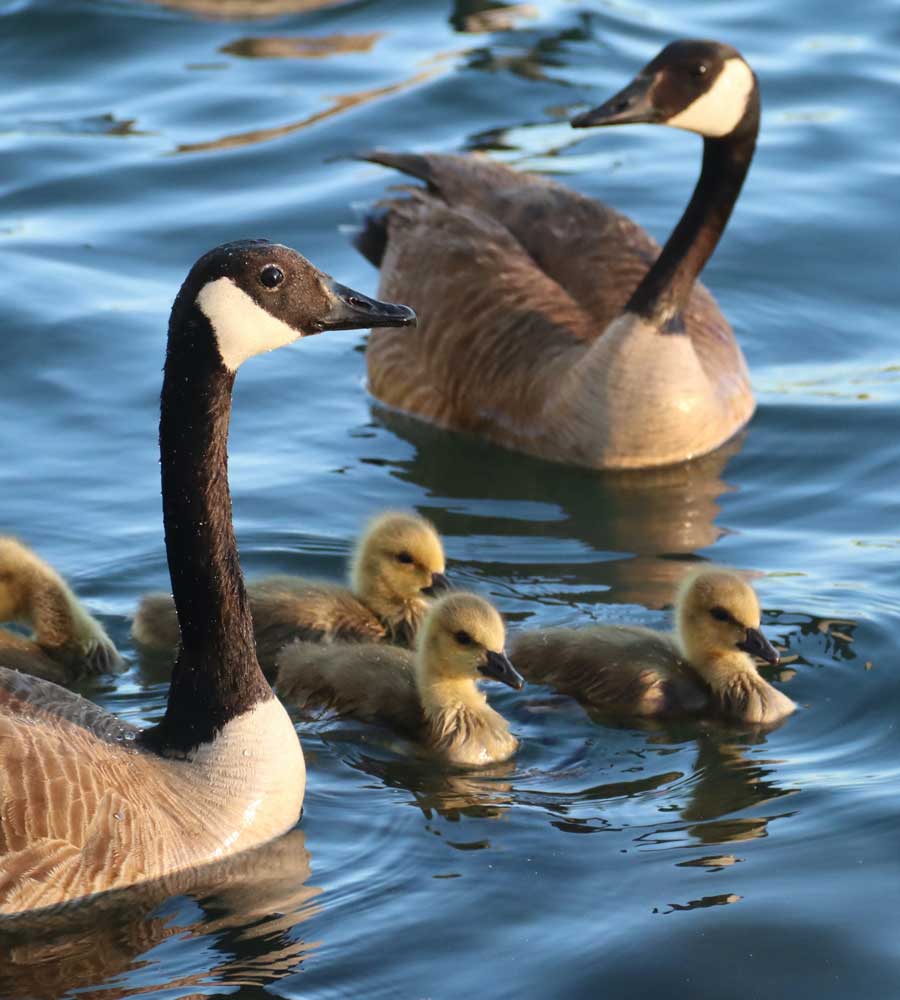
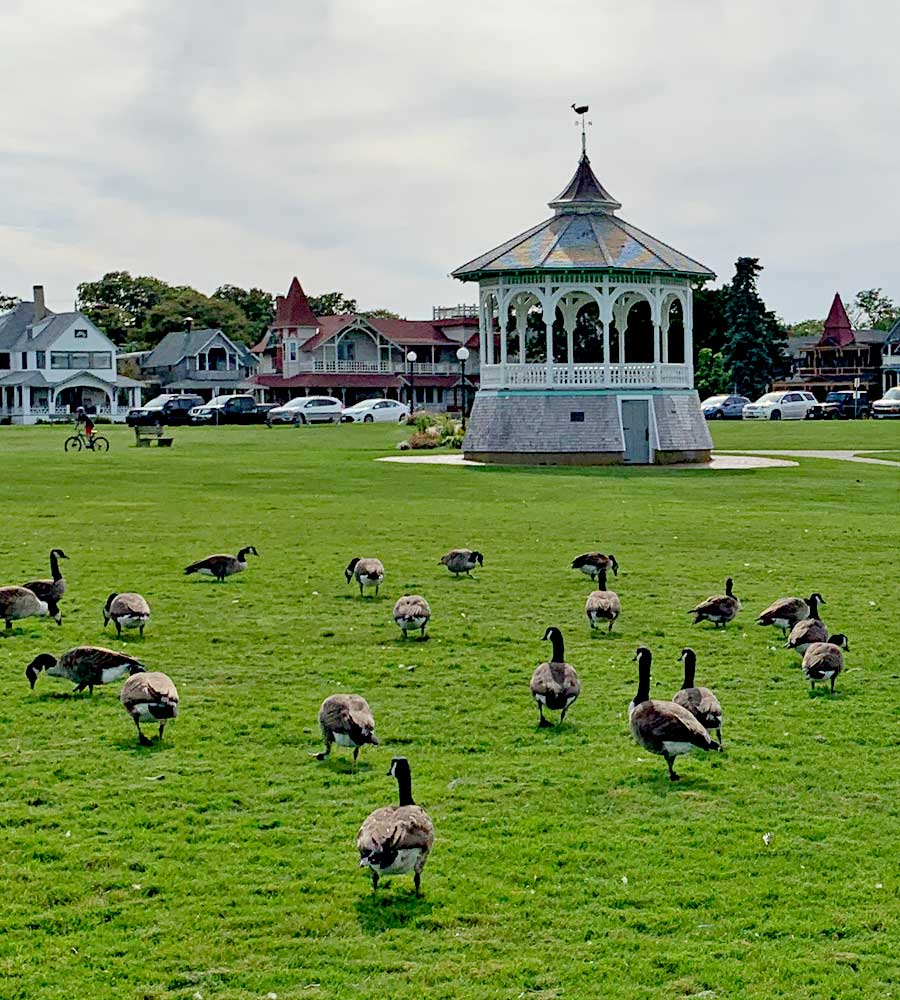
They Aggressively Defend Their Nests
Geese generally aren’t afraid of humans since they tend to exist in such close proximity. This can sometimes lead to hostile interactions between humans and geese, especially if the goose is a parent defending its young. If a parent goose feels it or its babies are threatened, it may hiss, flap its wings, or snap at the human – and in some cases, it will chase after them. If being chased by a large, angry goose isn’t scary enough to imagine, it’s even more terrifying when you know that geese have serrated tongues and bills. While they mostly use this evolutionary feature to graze on the fibrous stems of the grasses and strip tough grains from their stems, it can make their bite painful and is another reason to avoid making them feel threatened.
Help prevent human-goose conflict by keeping your distance. If you see a parent with babies, maintain a safe distance so the birds don’t feel threatened.
They Honk
In the spring and fall, huge V-shaped flocks of geese can be seen – and heard – flying overhead in their seasonal migration patterns. Their loud honking calls can be obnoxious to humans on the ground, but those calls are vitally important to keeping the flock together. Geese often fly overnight, when temperatures are cooler, and the air is less turbulent. The V-shape of their migration pattern allows them to conserve energy and travel farther distances – up to 1,500 miles at a time!
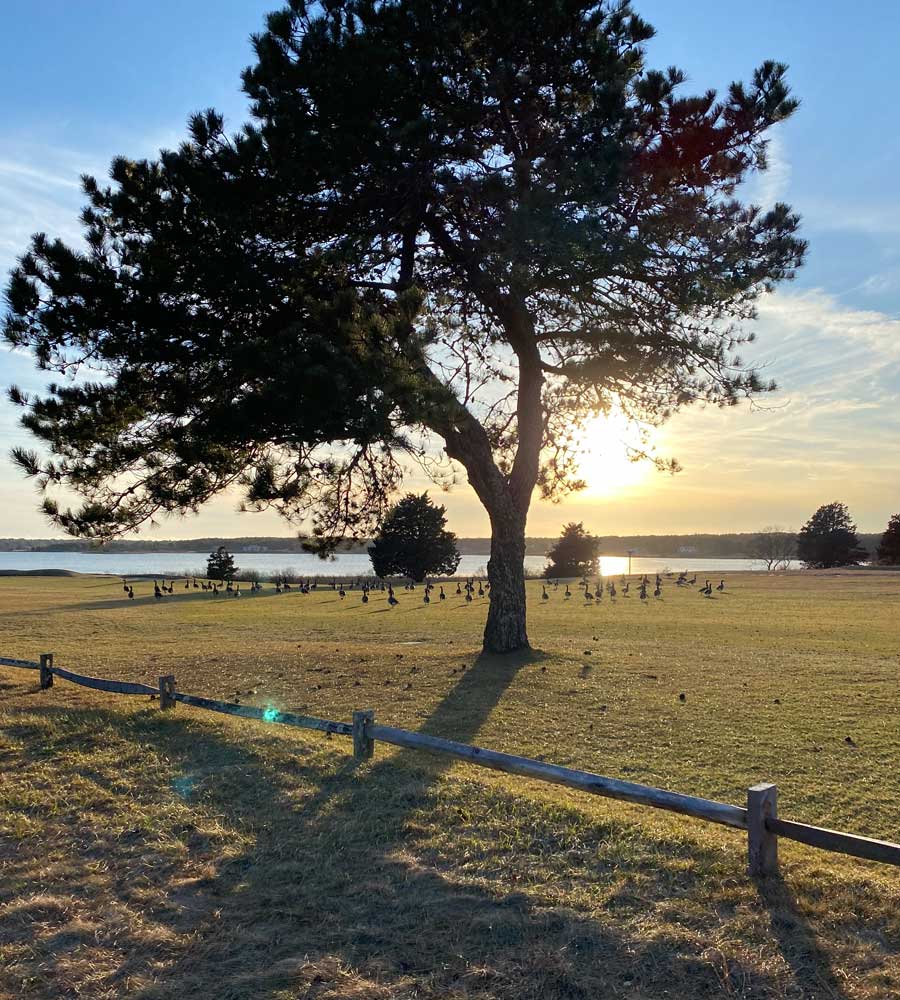
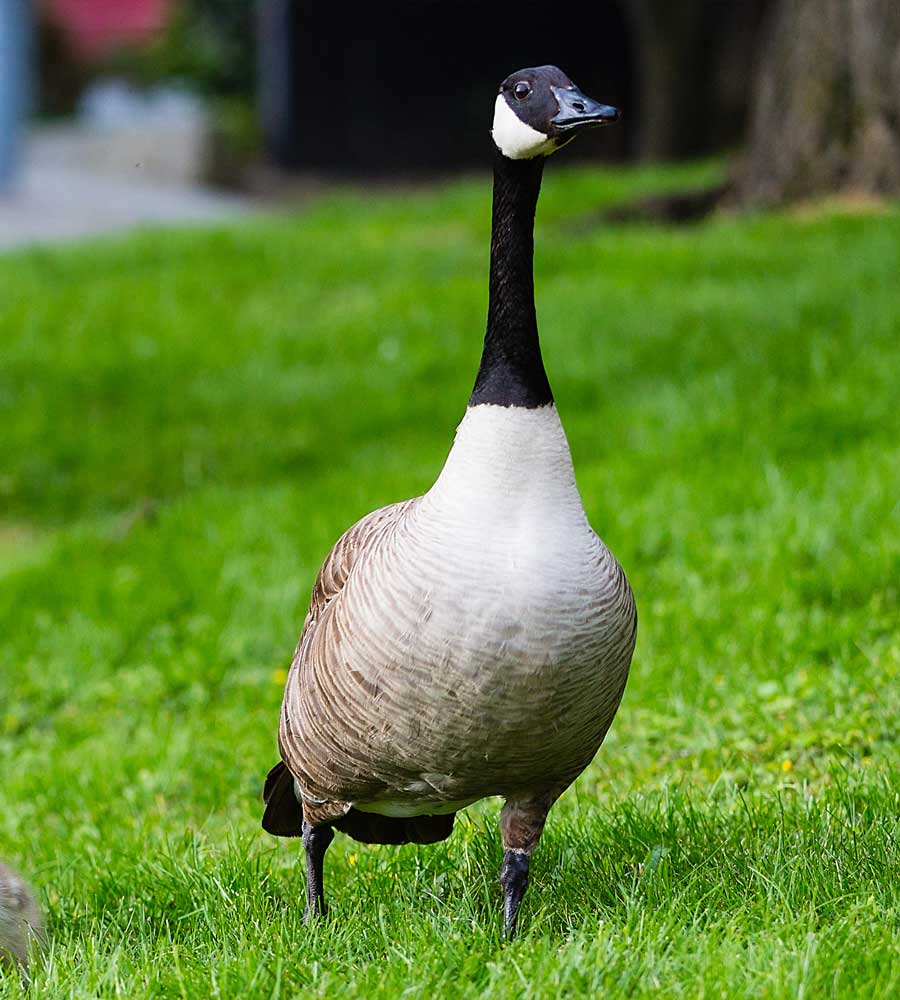
They Poop – A Lot
Those who maintain golf courses, public parks, community open spaces, and private lawns may face the approach of goose migration season with a deep sense of dread. These landscapes are generally flat, open spaces with no predators’ hiding place. They tend to have a lot of grass for food and are the perfect habitat for geese to thrive, especially if there’s a body of water nearby. And, where geese like to eat, there also tends to be a large accumulation of goose waste. You can protect yourself from the accumulation of goose waste on your lawn by reducing the amount of open, grassy space around your home or community. Consider creating a wildlife habitat garden with dense plantings of native shrubs, trees, and wildflowers, which ironically will make the landscape less attractive to geese. Your lawn and the other wildlife around your home will thank you!
They Can Carry Diseases
As mentioned above, geese can leave a large amount of feces and other waste behind on grassy areas. This can carry bacteria, parasites, and other diseases that mostly affect other birds, but which can sometimes be transmitted to humans (although this is very rare). You can avoid exposure by avoiding contact with goose droppings, and by ensuring proper disposal of landscaping waste.
Canada geese aren’t endangered or species of concern – in fact, due to their ability to thrive in human-developed areas, their populations have steadily increased in the past several decades. However, they are still native wildlife and important players in the natural food web, and the ecosystems where they live. You can help protect geese by not feeding them and by keeping your distance.
Feeding geese human foods like bread and popcorn may seem like a fun way to bond with wildlife, but their systems aren’t able to process this kind of food and it can sicken them. Additionally, if they learn to expect food from humans, they can become dependent and lose their willingness to seek food in the natural environment. This also heightens the risk of aggressive interactions with humans.
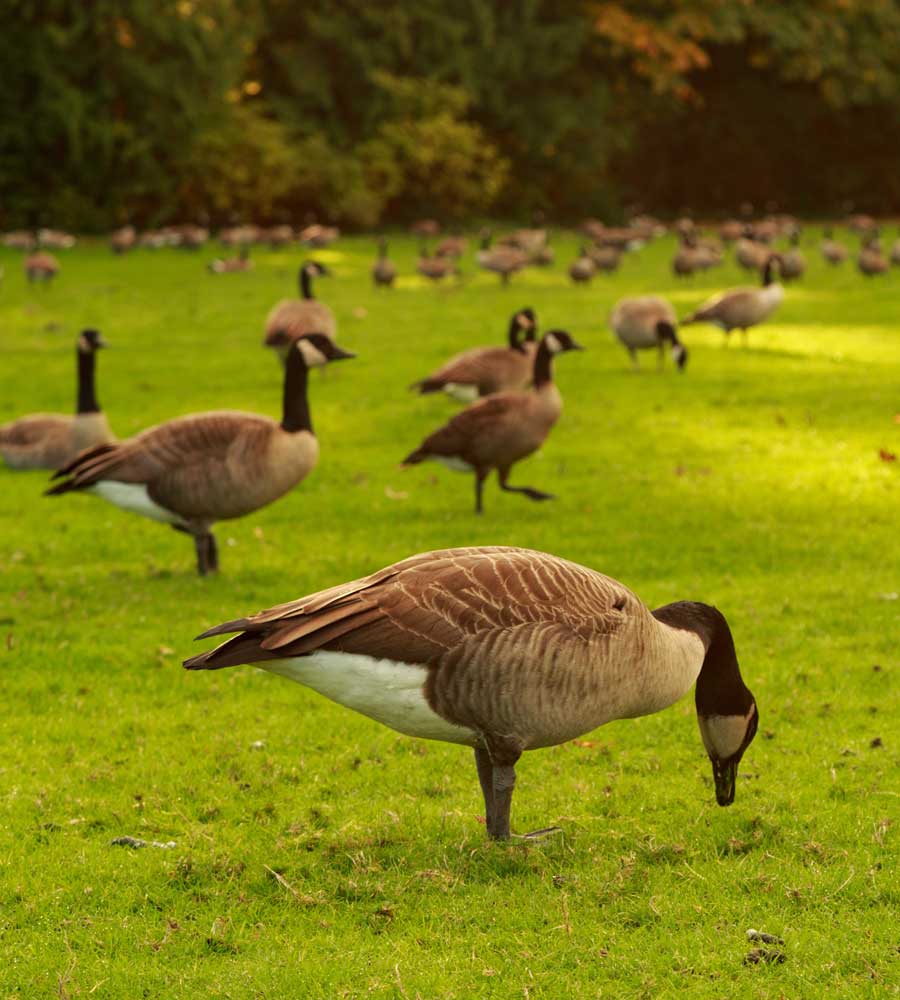
Start Protecting Your Property Today!
Contact us today for your
on-site free consultation
Request Your Free On-Site Estimate Today!
"*" indicates required fields
